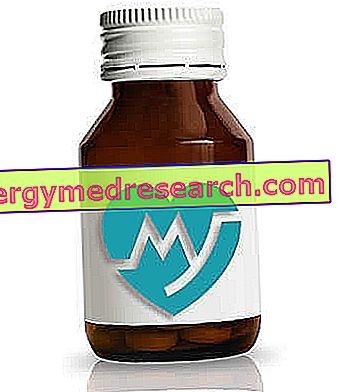Definition and origin
Wine is an alcoholic beverage obtained by fermentation of the fructose contained in grapes (or its crushing, called must), fruit of the vine (vitis vinifera), by fungi belonging to the saccharomycetes family.

To date, wine production is widespread throughout the world; specifically, Italy is one of the most representative countries for the high quality of the products, obtained thanks to the deep, culturally rooted tradition.
The study of wine in all its aspects (from production to tasting) is called enology, while in catering the sales and taste manager, engaged above all in food pairings, defines himself as a sommelier .
Classification
The wine is classified on the basis:
- of the production area
- of the grape variety of the grape (type of vitis vinifera )
- color (white, pink or red)
The most famous red vines are: Cabernet-Sauvignon, Cabernet Franc, Merlot, Pinot Noir, Zinfandel and Syrah; while the most famous white grape varieties are: Sauvignon, Chardonnay, Muscat and Riesling.
NB. The color of the wine depends on the type of grape used and the type of vinification; by pressing the grapes without macerating it is possible to obtain a white wine also from red grapes (as the color is given by the peel), while by dosing the maceration it is possible to manage the color of the drink. To obtain a rosé wine it is possible: either to use a mild maceration of red grapes, or a sustained maceration of a mix of white and red grapes (called uvagio ). A white wine, "full bodied" and with a very marked yellowish pigmentation, is produced by vinification of white grapes but with a good maceration time.
Very Light Wine Biscuits Without Eggs and Butter
X Problems with video playback? Reload from YouTube Go to Video Page Go to Video Recipes Section Watch the video on youtubeComposition
The composition of the wine depends on three factors:
- Type of grape
- Fermentation
- Vinification technique
Wine, being an alcoholic beverage, consists mainly of water (80-90%) and alcoholic molecules; these include:
- Ethyl alcohol (ethanol - C 2 H 5 OH): it is the product of the microbial fermentation of sugars
- Glycerin (1, 2, 3-propantriol, ): it is contained in portions of 4-15 g / l, it derives from fermentation and increases with increasing alcohol content
- Methyl alcohol (methanol - CH 3 OH): it is contained in wine in small portions, equal to 20-200mg, while at higher concentrations it becomes potentially toxic. It derives from the fermentation of the pectin contained in the peel; therefore, the greater the maceration of the grapes (from six to ten days) and the more the concentration of methanol increases
- Higher alcohols (1-propanol, 2-methyl-1-propanol, 3-methyl-1-butanol)
- Butylene glycol: it is a secondary sugar of alcoholic fermentation and its concentration is around 0.3-0.5 g / l
- Sugars: their coordination depends on the fermentation level and the added quota. The most common are fructose and glucose, but there is also a portion of NON-fermentable glucides composed of xylose and arabinose
- Organic acids: there are more than 50 types and together they contribute to the total acidity of the wine, which however is chemically expressed in g / l of tartaric acid.
- Nitrogen substances: they are the same as those contained in grapes, but in smaller quantities
- Phenolic substances: they derive from grapes and not from microbial fermentation, but their concentration also depends on the type of vinification. If the maceration of the must is used, the quantity of polyphenols in the wine is directly proportional to the time of maceration, even if the type of grape used represents a further not indifferent variable. Polyphenols are the color, aroma and stability of wine.
NB. Some phenolic substances are transferred from the aging barrel to wine.
- Mineral substances: they come from grapes and are mainly: magnesium (Mg), sodium (Na), calcium (Ca) potassium (K), phosphates, sulphates and chlorides, for a total of 2-3 g / l.
- Aromatic substances: primary or varietal aromas, pre-fermentative aromas, fermentative aromas, post-fermentative aromas
- Vitamins: they are the same as those contained in grapes, except for ascorbic acid (vit. C) which disappears with vinification.
- Dissolved gases: carbon dioxide, oxygen and sulfur dioxide (additive).
sangria
X Problems with video playback? Reload from YouTube Go to Video Page Go to Video Recipes Section Watch the video on youtubeWine in the Diet

"in the adult SANA population, the daily intake of alcohol with meals can reach 40 g in males and 30 g in women"
... and this means that, assuming an average alcohol content of 10-11 g per 100 ml of wine, it is allowed to drink daily up to 3 glasses (125 ml) of wine to men, and just over two glasses to women ; in the elderly the quantity is reduced to 30 g in males and 25 g in females.
NB. It is not recommended to consume wine in: pregnancy, age less than 18 years, Diabetes Mellitus, taking some drugs, driving a car.
If liked (and this does NOT mean that you recommend systematic consumption), wine (especially red) brings a significant amount of polyphenols (especially tannins and flavonoids, among which the most famous is resveratrol). These are newly discovered molecules that possess excellent health skills among which we recall:
ANTIOXIDANT - ANTICANCEROGENICA - ANTI-THEROGENIC
In conclusion, it is advisable to drink wine only if it is appreciated and also in this case not to exceed the rations recommended by the LARN. The contribution of polyphenols is undoubtedly remarkable and takes part in the achievement of a sufficient quota for human nutrition, however, the relative alcohol concentration limits its consumption to the adult and healthy population; therefore, in special pathological or physiological states it is recommended to introduce dietary polyphenols through portions of fresh fruit and vegetables, and extra virgin olive oil.



